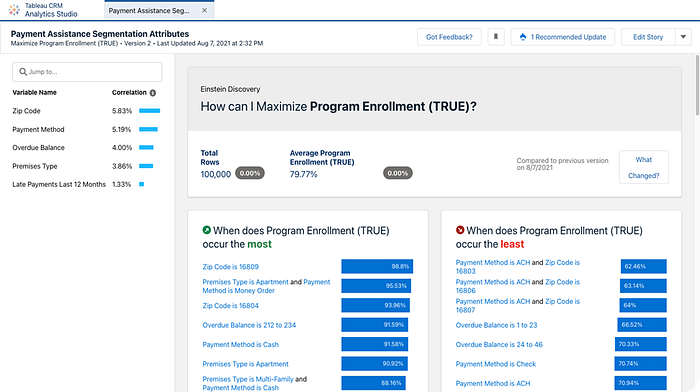In an era where sustainability and environmental responsibility are paramount, energy & utility companies play a crucial role in promoting various utility programs, including energy efficiency and water conservation. Administering programs aimed at achieving sustainability goals requires efficient management of customer data, billing, participation tracking, communication, and reporting. Unfortunately, many energy & utility companies are still leaning heavily on Excel spreadsheets, shared email boxes, and paper forms.
Let’s discuss how energy & utility companies can utilize Customer Information Systems (CIS) and Customer Relationship Management (CRM) applications to effectively administer utility customer programs.
CIS for Customer Usage & Billing Data
A CIS application serves as the backbone of utility operations, handling customer data, billing, and consumption information. When it comes to utility customer programs, CIS applications offer multiple advantages.
Identifying Eligible Participants
CIS applications enable utilities to analyze customer data and identify eligible participants based on consumption patterns or specific criteria, such as high energy usage or water-intensive properties. While the CIS is the system of record for the customer and billing information, it may not contain the bulk of usage data if the utility has an AMI system providing hourly or 15-minute reads. In this case, program administrators should consider combining data from their MDM system.
Billing and Incentive Management
CIS applications streamline billing processes related to the programs, calculating energy savings, applying incentives or rebates, and reflecting changes in billing structures due to implemented measures. As customers choose to adopt Time of Use (TOU) rates, conservation rates, and irrigation meters, their billing profile will change and the CIS should be able to compare the usage before and after rate changes as a measure of program success.

CRM for Enhanced Engagement
CRM applications excel at managing customer interactions, fostering relationships, and driving engagement. When applied to utility customer programs, CRM applications offer a wealth of benefits.
Outreach and Communication
CRM applications, like the Salesforce Energy & Utilities Cloud, facilitate targeted communication campaigns to raise awareness about programs, educate customers on sustainable practices, and encourage active participation. Integrating CIS data into the CRM application allows utilities to elevate their customer data so that it can be used in communication, segmentation, and targeted marketing efforts.
Program Enrollment and Tracking
CRM applications guide customers and customer service agents through enrollment, capture relevant data, and track customer program participation status. This helps utilities ensure seamless program administration and accurate reporting.
Platforms like this that can create dynamic customer interaction tools allow customers to track their applications, view their program status, and receive relevant program-specific information such as the installation of energy-saving devices or water efficiency measures.
Personalized Recommendations and Support
CRM applications provide personalized recommendations for energy efficiency or water conservation practices based on customer data and preferences. They also promptly handle customer inquiries, complaints, and service requests to ensure a positive customer experience. By integrating data from CIS, MDM, GIS, Zillow, and more, CRM tools can create a personal campaign for each customer based on programs they are eligible for without manual intervention by staff. AI bots can be trained on customer and usage data to tease out patterns that identify if a customer is watering their lawn on the wrong days, has recently purchased an Electric Vehicle they are charging at home, or if they have outdated appliances.
Reporting and Analysis
Lastly, CRM applications can generate insightful reports and analytics on program participation, customer engagement, conservation impact, and achieved savings. These data-driven insights empower utilities to assess program effectiveness, make informed decisions, and plan future initiatives. The data and analytics provided by your CRM can even be exposed to public portals so that customers, regulators, policymakers, and stakeholders can view the results of programs in near-real time.
Eliminating Excel and Getting Better Results
By leveraging the capabilities of both CIS and CRM applications, energy & utility companies can administer customer programs more effectively. CIS applications streamline program operations, enable accurate billing, and manage incentives. CRM applications enhance customer engagement, deliver personalized recommendations, handle inquiries, and provide valuable reporting and analytics. You can do all this to administer your programs without using Excel spreadsheets, shared email boxes, and paper forms.
Embracing these technologies allows utilities to drive behavior change, promote sustainable practices, and achieve significant environmental impact. Ultimately, the integration of CIS and CRM applications empowers utilities to create a more sustainable future while delivering excellent customer service.
— — —
Nathan Gastineau is the Vice President of Sales at CG Infinity in the Energy & Utilities Practice.

